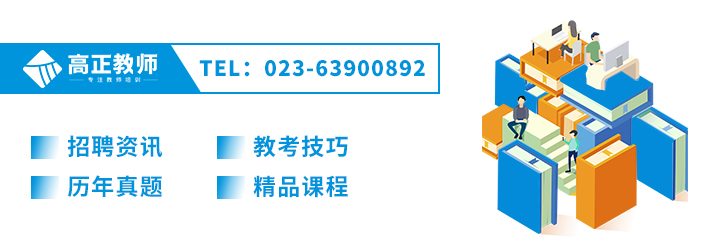
1. 题目: 语法-强调句
2. 内容:
A: Nina’s car got broken into yesterday, did it?
B: No. It was Michael’s car that got broken into!
3. 基本要求:
(1)针对以上材料设计一节语法课;
(2)全英授课;
(3)适当的板书设计。
《高度发达的经济》教案
It-cleft sentences
Teaching Plan
I Teaching Aims
Knowledge aims
1. Students will recognize the it-cleft patterns---- It is/was... that/who...
2. Students will know the grammar meaning for emphasis.
Ability aims
1. Students can use it-cleft patterns to give information in their own daily speaking.
2. Students can adopted the targeted grammar into their writings.
Emotional aim
Students will have a positive attitude towards different language rules and will try to comply with them in their daily practice.
II Teaching Key &Difficult Points
Key point:
The key point for my students is to master the usage of the targeted grammar, such as they will know at what kind of circumstances “that” in this structure can be omitted.
Difficult point:
The difficult point is to apply the it-cleft sentences more frequently in their own speeches and writings.
III Teaching procedures:
Step 1: Warming up
Design a mental game, and ask them to identity whose car got broken into. Play the rolling pictures of 7 different people in their different cars, at the same time their names will be presented on the pictures. Give them 50 seconds to observe, and show them the black broken car and they need to identity the car. After checking their answers, uncover the truth on the blackboard. “ It was Michael’ s car that got broken into!”
(Justification: The mind game is a little bit challenging and it will quickly attract the students attention.)
Step 2 : Presentation
Taking the sentence on the blackboard as an example, underline the structure model and explain the grammar meaning to the class: the information that comes after it is emphasised for the listener. The clause which follows the it-clause is connected using that and it contains information that is already understood. And invite them to tell us from the above sentence,what kind information is already knew? And what kind information is new and emphasised?
Focus (new information): it was Michael’ s car
Understood already (old information): a car got broken into
And then box “that” in the sentence and tell them we often omit that in informal situations when it is the object of the verb.
After they get the information, I tell you them that it is said that a man broken the car. And ask them to use the structure to give the new information.
It was a man who (or that) broke into the car.
After they give the answer and I will teach them that When a personal subject is the focus, we can use who instead of that. Then I tell them that the video shows two teenager broke into the car. And I will invite them to give the new information using the it-cleft model.
It was the two teenagers who broke into the car.
Next I will tell them when a plural subject is the focus, we use a plural verb but It + be remains singular.
(Justification: Embedding the grammar points into a mind game will make the class more interesting when they can pick up the new knowledge while sorting out of a detective case.)
Step 3: Practice
Ask them to finish the exercise I have prepared for them.
Then I will show them a sentence: I met two old friends in the school park last week. And
ask them to focus on different information in this sentence and rewrite them down.
An example will be prepared for them:
It was I who met two old friends in the school park last week.
(Justification: The first task is to make sure that students can actually master different grammar points of it-cleft sentences. And the second task is to help students to use it more skillfully. )
Step 4: Production
Divide them into groups 4 and ask them to work out a full case report of the above case.
Later invite different groups to make a report speech in front the class.
(Justification: This can train their speaking ability as well as their logical thinking ability.)
Step 5: Summary and homework
Invite 1 student to summarize what we have learned today, and another one to add up.
Ask students to write down a short paragraph under any topics (3 sentences at least).
(Justification: This is to help my students have a bigger picture of what have learned today and help them to write with it-cleft sentences purposely.)
IV Blackboard design

V Teaching Reflection
【结构化问题】
幼儿园教育和小学教育有什么不同?
【参考答案】
幼儿园和小学是相互衔接的两个教育阶段。幼儿园教育与小学教育在教育性质、课程设置、教学方式等方面都有所不同。
幼儿园教育与小学教育主要有以下几方面不同:
首先,幼儿园教育属于非义务教育,而小学教育属于义务教育。义务教育具有“强制性”、“普及性”等特点,即让每个适龄儿童接受义务教育是学校、家长和社会的义务。因此,家长必须将适龄孩子送到学校接受小学教育,而幼儿园并无强制性。
其次,幼儿园教育遵照“教养并重”原则,小学则“以教为主”。幼儿园除了对儿童进行全面、和谐发展的启蒙教育外,还要给儿童以生活照料和养育等。小学则要依据一定的培养目标和课程标准对孩子进行有目的、有计划的德、智、体等全面、可持续发展的教育。每门课程都有明确、具体的教学目标与教学要求。还特别关注学生的学习兴趣、好奇心、求知欲以及形成良好的道德行为习惯和学习习惯。
再次,幼儿园课程是综合性的,将各领域内容有机整合起来,以主题方式呈现。小学课程则以学科为主,如语文、英语、数学、自然、体育与健身、美术等,还有各类兴趣活动和探究活动等。
最后,幼儿园以游戏为主,注重让孩子在游戏中学习,在活动中体验。小学则以课堂教学为主。教师除采用讲授的形式教学外,还非常注重让学生通过观察、思考、操作、探究、讨论、表达等方式进行知识学习和能力培养。
我的问题回答完毕,谢谢!
关注更多教考信息:高正教师APP(一键下载)
微信公众号订阅:重庆市教师招聘网(cqjsgz)
在线备考答疑QQ群:956811699(客户端一键进群)













